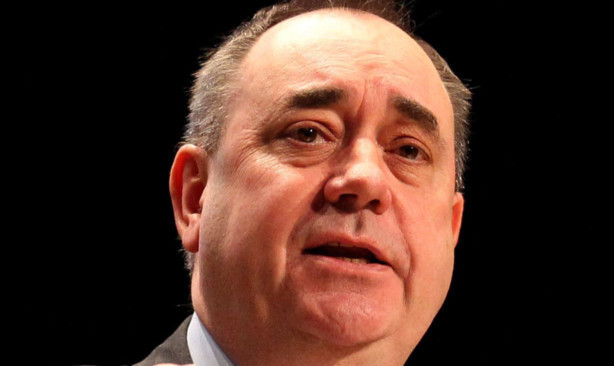It is “impossible” to calculate the setup costs of an independent Scotland, according to Alex Salmond.
The SNP leader sidestepped repeated calls to set out a figure during First Minister’s Questions and his official spokesman later admitted the public will not be given any total before September’s referendum.
Opposition slammed the stance as a “dereliction of its duty” and questioned the decision to “withhold such critical information” and leave voters to make their referendum decision blind.
In the Holyrood chamber, Tory leader Ruth Davidson and Lib Dem frontman Willie Rennie said the Scottish Government failed to detail the costs despite saying officials were working on it two years ago.
They demanded answers one day after the UK and Scottish administrations delivered competing predictions about how the vote could affect household finances.
The UK Treasury faced accusations that its £2.7 billion suggested set-up costs were inaccurate, among them London School of Economics professor Patrick Dunleavy, whose work informed the analysis.
The academic later “guesstimated” the Scottish cost could be between £150 million-£200 million. Mr Salmond agreed with the lower suggestion.
When later asked, however, if any estimate will be published on the cost of setting up an independent Scotland before September’s vote, a spokesman for the First Minister said: “No, because by definition, if you come back to the point about assets, we are not going to negotiate our fair share of shared assets until after a Yes vote.
“So by definition that has to be after the referendum.”
The spokesman also said “no document exists” with the workings, adding that he did not know of any Scottish Government figures produced in relation to set-up costs and was “not aware of” any civil servants being asked to produce such numbers.
Opponents seized on a leaked memo from 2012 by Finance Secretary John Swinney, which suggested a detailed analysis was being prepared.
It said: “Work is under way in finance and the office of chief economic adviser to build a comprehensive overview of the institutions, costs and staff numbers which I will draw together and provide an update to cabinet in June.”
Mr Rennie said: “People will be flummoxed as to why the Scottish Government would wish to deny access to this important information on the set-up costs for an independent Scotland.”
Ms Davidson said: “The Scottish Government is either deceiving the Scottish public, or it is in dereliction of its duty.”
In his response in the chamber, Mr Salmond again criticised the Treasury’s approach. He said: “If the chosen expert of the United Kingdom Government comes up with an estimate and I describe it as reasonable, isn’t it the way to go forward as opposed to misrepresenting his work, overstating by 12 times and attempting to traduce the reputation of the London School of Economics?”
